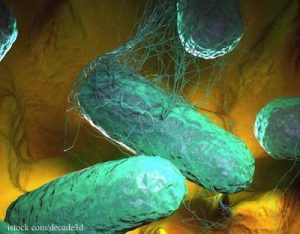The FDA has released the NARMS (National Antimicrobial Resistance Monitoring System) Retail Meat Interim Report with data from January 2014 through June 2015. This report focuses on Salmonella, including serotype distribution, prevalence by food source and state, selected resistance patterns, and a list of all the identified antimicrobial resistance genes.
 The “encouraging trends” in the report include finding that the prevalence of Salmonella in retail poultry is at its lowest level since testing began in 2002. In ground turkey, the prevalence of Salmonella has declined from a high of 19% in 2008 to 6% in 2014. In retail chicken during the same time period, it dropped from 15% to 9%.
The “encouraging trends” in the report include finding that the prevalence of Salmonella in retail poultry is at its lowest level since testing began in 2002. In ground turkey, the prevalence of Salmonella has declined from a high of 19% in 2008 to 6% in 2014. In retail chicken during the same time period, it dropped from 15% to 9%.
Salmonella resistance to ceftriaxone, a medically important antibiotic from chicken sources declined steadily from a high of 38% in retail chicken in 2009 to 18% in 2014, and 5% during the first half of 2015. In addition, resistance to fluoroquinolones such as ciprofloxacin, which are critically important for treating Salmonella infections, was absent from poultry and beef, although one isolate was found in pork. Multidrug resistance in Salmonella showed a “downward drift” in chicken and turkey from 2011 levels of 45% and 50%, respectively, to 20% and 36% in June 2015.
But, in causes for concern, FDA identified the first instance of ciprofloxacin resistance in an isolate from retail pork, and identified the genes associated with this resistance. One ceftriaxone-resistant retail chicken isolate from 2014 had the extended-spectrum β-lactamase (ESBL) gene blaCTX-M-65. This is the first time this important class of resistance gene has been detected in the United States. This gene causes resistance to β-lactam antibiotics, which means fewer treatment options for patients.
Whole genome sequencing (WGS) data can be used to predict antimicrobial resistance for several bacteria and can also identify the genes that cause resistance to a specific antibiotic. This new report has WGS data for all of the 271 retail meat isolates from 2014 and for 114 of the Salmonella isolates collected from January through June 2015.
All of the WGS data for NARMS isolates are publicly available in GenBank bioproject PRJNA290865. In addition, WGS data lets the FDA for the first time, to understand the mechanisms underlying each of the resistance phenotypes observed, and how they differ by source. All of the data can be found at NARMS Now.




